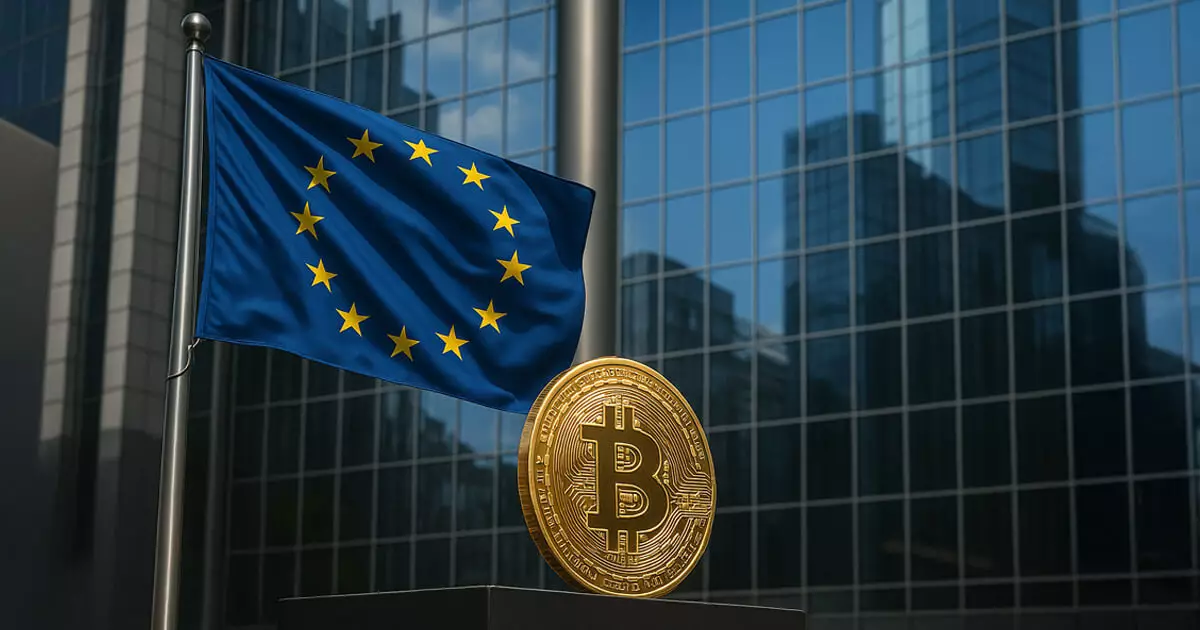When the Markets in Crypto Assets Regulation (MiCA) hit the European scene, it was heralded as a transformative shift intended to usher both investors and entrepreneurs into a safer register of cryptocurrency dealings. Yet, beneath this polished façade lies a different narrative, one that reveals the potential stifling of innovation and the unintended fortification of entrenched interests. The irony is that while MiCA aims to impose clarity and safety, it’s possible it may inadvertently undermine the very decentralization that cryptocurrencies were designed to promote. The arduous compliance demands it imposes risk creating a landscape where nimble startups flounder against the weight of bureaucracy, leaving larger, already established enterprises to thrive.
Regulatory frameworks should foster growth, not hinder it. Unfortunately, MiCA’s grip on the market could lead to a scenario where only the big players can afford to play, pushing innovative solutions into less restrictive territories. The result? A potential brain drain of talent and ideas, as enterprising individuals seeking to disrupt the status quo pack up and relocate, leaving Europe to linger in the wake of innovation.
The Challenges for Startups
One of the most alarming consequences of MiCA revolves around its regulatory burdens that weigh heavily on startups already struggling to find their foothold. For fledgling entrepreneurs armed with little more than passion and determination, the labyrinthine processes required to secure compliance could easily prove insurmountable. The mathematics of risk versus reward becomes skewed when startups face daunting licensing costs, exhaustive paperwork, and stringent compliance audits.
It’s no secret that larger companies possess the financial savvy and resources to navigate these hurdles comfortably. Meanwhile, smaller players are shackled by the costs associated with compliance, potentially limiting their ability to compete. Thus, the very instruments aimed at ensuring investor protection may constrict the diversity and dynamism of the market, leading to an unsightly monoculture dominated by heavyweight corporations with the means to shoulder the compliance burden.
Decentralized Finance (DeFi) and its “Invisible” Regulations
As MiCA teeters on being a path to safer investments, it conveniently sidesteps the complexities of decentralized finance (DeFi). While it tries to address the broader cryptocurrency market, DeFi is enigmatically left in a gray zone of regulatory ambiguity. This oversight not only leaves participants vulnerable but risks exposing a fundamental deviation from the very essence of cryptocurrency principles which prioritize autonomy and self-governance.
The future of DeFi in Europe lies in limbo, teetering dangerously between innovation and oppression. With MiCA dangling the carrot of regulation but failing to engage with the ethos behind DeFi, the potential for friction between regulators and innovative thinkers looms large. As authorities grapple with transitional frameworks, it is prudent to ask: will they adapt quickly enough to procure a healthy relationship with this burgeoning sector, or instead, will they create a hostile environment that hampers its development altogether?
The Future: A Centralized Crypto Market?
With the increasing regulatory scrutiny brought on by MiCA, there is an unsettling fear that the crypto industry may see a shift towards centralization. The very mechanism designed to enhance safety could morph into a tool that consolidates control within a select group of monetary titans. Established exchanges and custodians, which have the ability to meet high compliance standards, might find themselves gaining a disproportionate advantage.
If smaller innovators succumb to regulatory pressure and vacate the space, the irony remains: MiCA may succeed in enforcing regulations designed to protect the public but in doing so could obliterate the competitive landscape that fueled the very innovations it hopes to support. Perhaps the larger question here is whether regulation, in its earnest attempt to increase trustworthiness in a nascent industry, will kill the freedom of choice — a foundational tenet of blockchain philosophy.
A Balancing Act of Clarity and Innovation
The tension between regulation and innovation is palpable across the crypto landscape. In the quest for enhanced clarity, what’s critical is finding a balance that promotes innovation without sacrificing security. MiCA may bring necessary oversight, but it also poses challenges that could pull Europe toward a homogenized crypto populace.
Instead of fearing change, both regulators and stakeholders should view this regulatory initiative as an opportunity for dialogue and collaboration to build a robust, safe, and innovative cryptocurrency environment. It’s essential that all participants in the industry, from investors to regulators, engage in this discourse, ensuring that the future of cryptocurrencies in Europe thrives, not merely survives amid a sea of regulations.
In a world where uncertainty looms large, fostering an ecosystem that inspires creativity while ensuring consumer protection should be the ultimate goal—one that MiCA risks overshadowing if not approached with the right perspective. The stakes are high, and Europe must not lose sight of the pioneering spirit that has defined this transformative sector.

